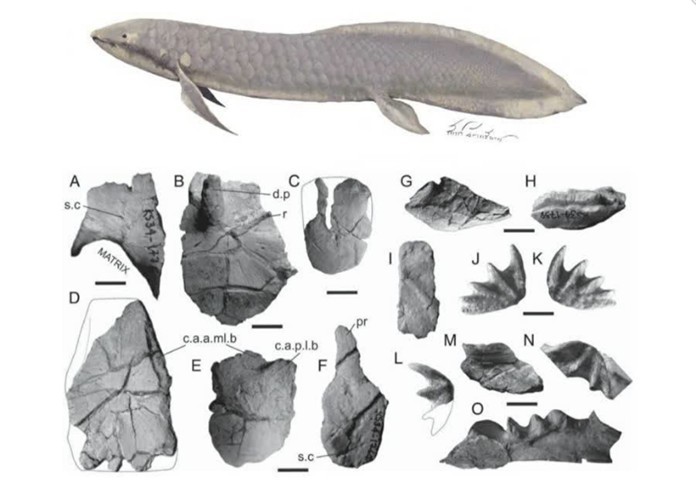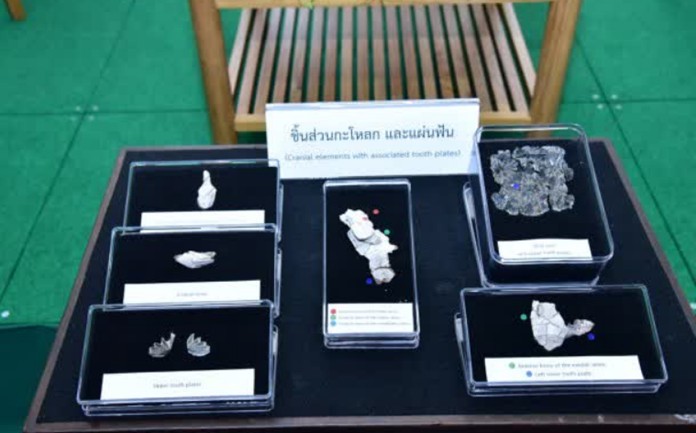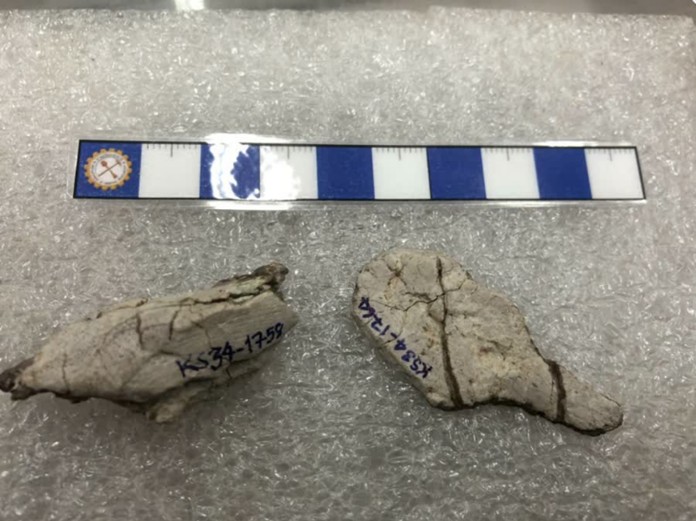
A fossil of an ancient lungfish has been found in Kalasin province. Paleontologists say this is the discovery of an unknown lungfish species from 150 million years ago, signifying the biodiversity of the fossil site.
Please Support Pattaya Mail
The Department of Mineral Resources announced the discovery of the new Jurassic lungfish species, found at the Phu Noi fossil site in Kalasin, where fossils of prehistoric creatures dating as far back as 417 million years have been identified.
The fossil of this unknown lungfish species has been studied by fossil experts from The Geneva Museum of Natural History, together with Maha Sarakham University’s Paleontological Research and Education Center, and the Department of Mineral Resources’ Sirindhorn Museum.

The creature was classified as a member of the Ferganoceratodus genus from its skull and teeth. Due to unique characteristics that differ from other species in the same genus, it has been formally named Ferganoceratodus annekempae.
The fossil is considered to be about 150 million years old, indicating the existence of this species in the Devonian age. It is regarded as a rare fossil find, especially the skull part.
Lungfish is an animal with special characteristics, with both gills and lungs available for respiratory purposes. The Ferganoceratodus genus has only ever been found in China, Russia, and Thailand.

The Department of Mineral Resources’ Director General Sommai Techwan, said the discovery of this fossil shows the biodiversity of Phu Noi fossil site, where fossils of species from the late Jurassic period can be found.
The area is also home to fossils of six new vertebrate species, namely a species of freshwater shark, a species of bony fish, a species of lung fish, a species of turtle, and a species of crocodile. Some 5,000 pieces of fossils have been discovered in this area so far. (NNT)

 |
 |
 |





